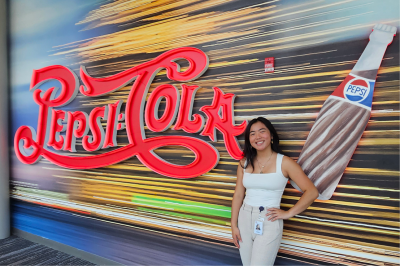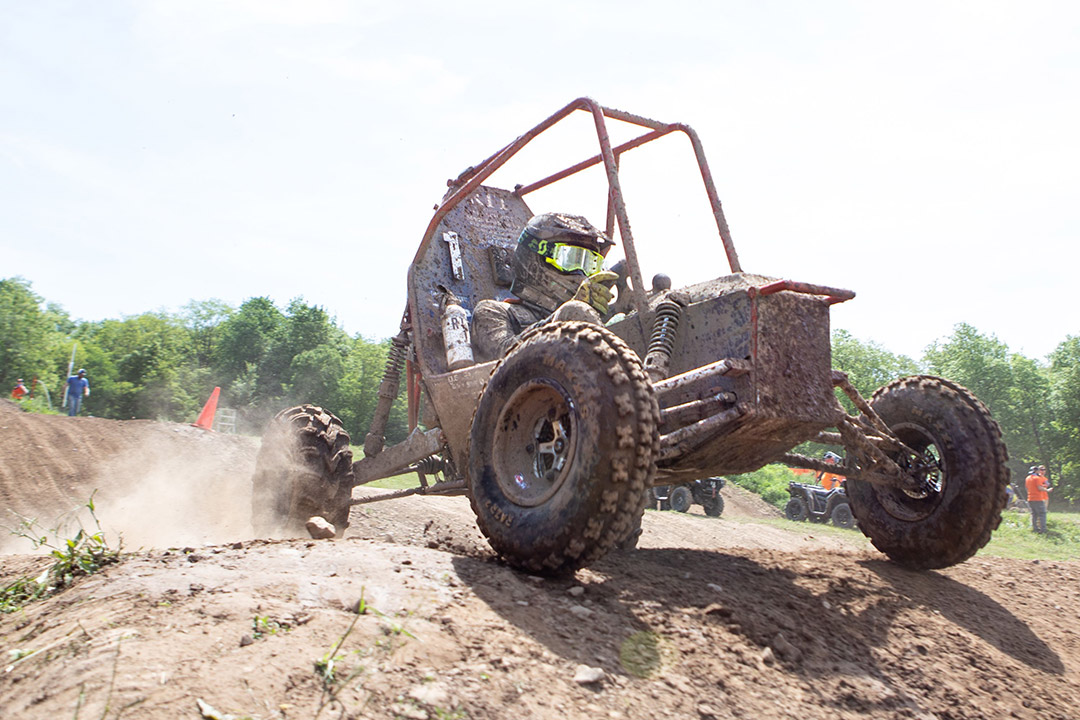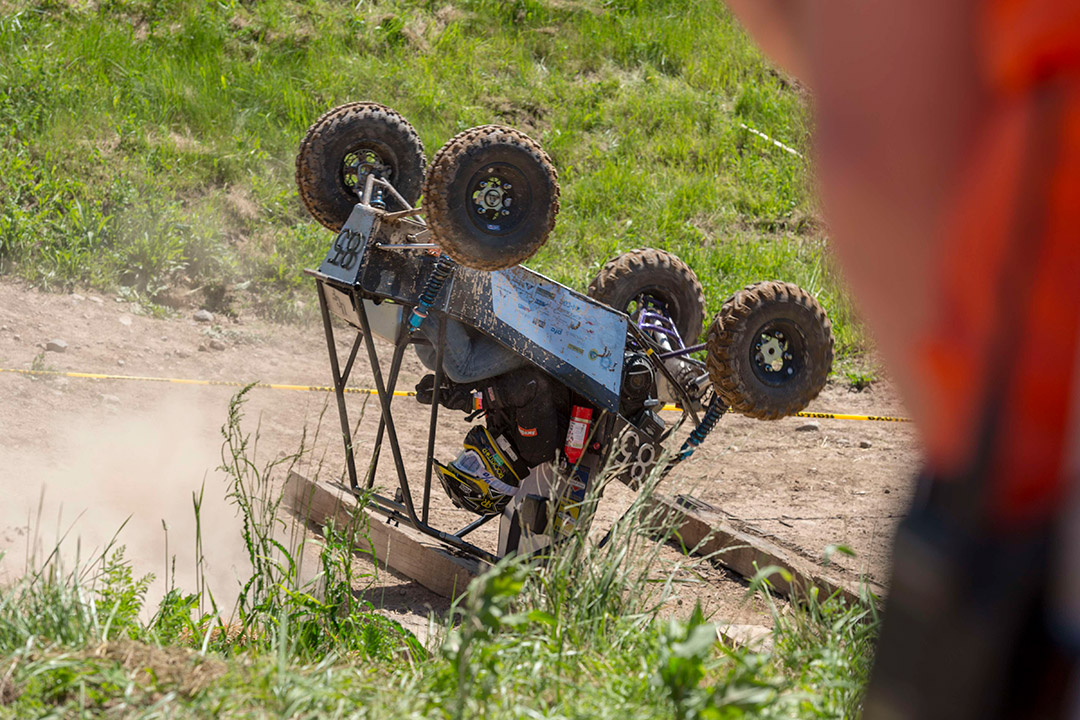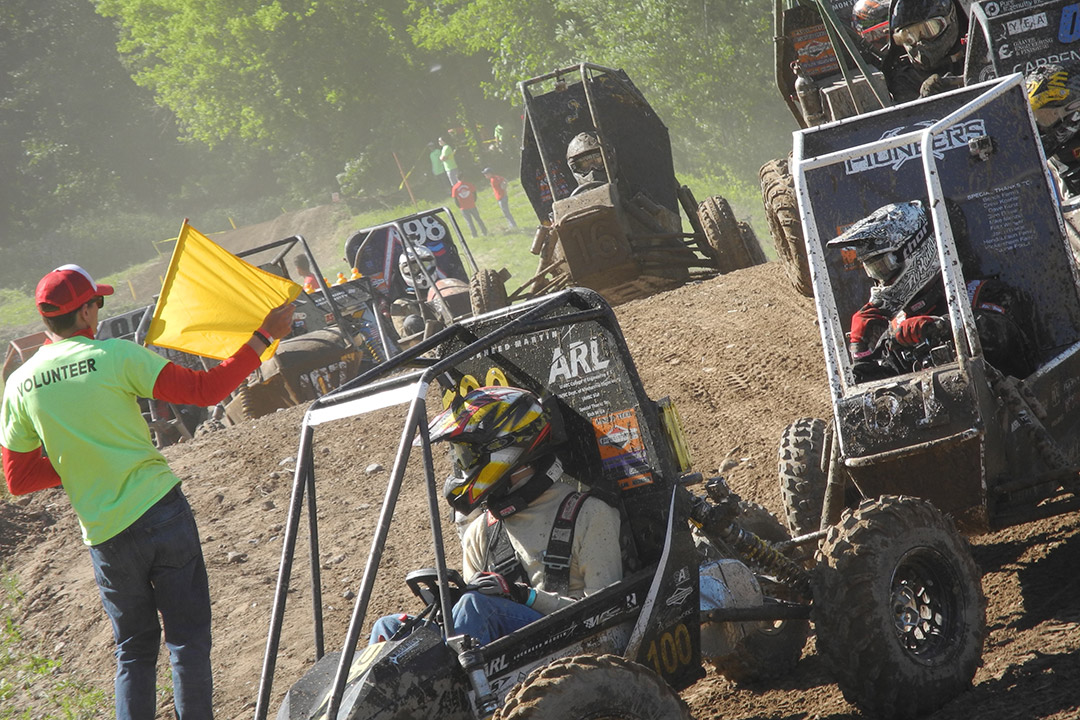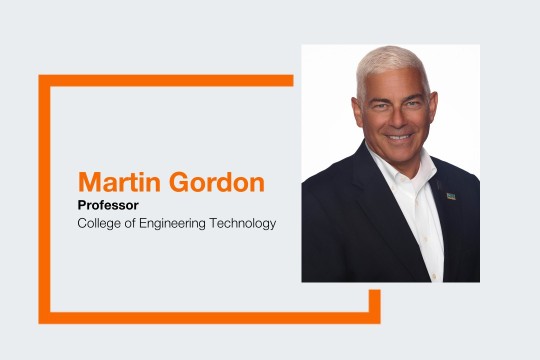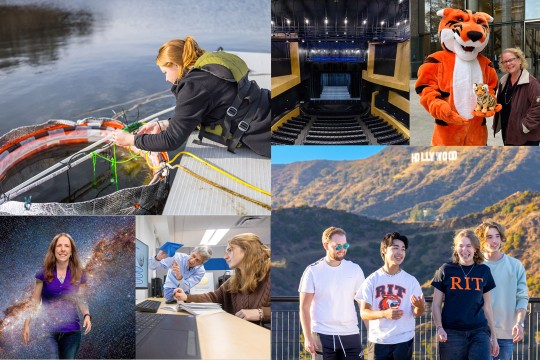Baja SAE Rochester 2022 takes place June 2-5 at RIT and Palmyra Motocross Raceway
RIT Baja leaders discuss new season, strong team, and hosting another international event at home
Matteo Bracco
RIT Baja navigates the course at Hogback Hill during the 2019 Baja SAE Competition.
Michael Bush
RIT Baja will be among the 100 collegiate race teams coming to town for the 2022 Baja SAE Rochester competition, taking place June 2-5 at RIT’s Gordon Field House and at Hogback Hill Motocross site in Palmyra N.Y.
National and international collegiate Baja racecars will start arriving in the next few weeks at Rochester Institute of Technology for the Baja SAE Rochester event, June 2-5. RIT will host the international off-road event again, for the eighth time. It remains a competition that is not for the faint of heart, but one that gives student-engineers a career edge.
RIT’s Baja race team manager Anthony Blasie and project manager Mike Borodzik are fourth-year mechanical engineering technology students. Blasie is from Belle Mead, N.J.; Borodzik is from Depew, N.Y. They started with the team in their first year and have been involved ever since. They talked about the racecar, the team, and how RIT RIOT Racing has maintained its reputation as gracious event hosts and intense competitors.
What are your responsibilities with the team?
Anthony Blasie: My role is to run the team day-to-day and be the spokesperson for the team, our and managers, and sponsors. Personality-wise, I’d say our team has a lot of dedicated members that want to come in and do a lot of work for us. I think that’s what sets us apart—the dedication factor.
Mike Borodzik: My role is overseeing the project timeline, testing schedules, documentation, engineering design cycle. We have the car mostly built so we are focusing on getting testing done, ensuring all the equipment is ready before the event. Our team really has a passion for learning the engineering cycle. People who want to learn and do more often succeed better on this team. The ones that stay around, asking questions, wanting to learn more, asking “Can you show me how to do this so I can do it for myself?” that’s what I think helps us succeed and do so well year to year.
What does it take to build the RIT Baja Racecar?
Borodzik: The first year, you are learning about the team, how it’s run. Second year, you understudy someone in a system you are interested in, you shadow those people, to learn more about it. The third year you are creating parts. The fourth year, you are design lead, sometimes re-doing a whole design process because you have a better understanding of how it goes, and by fifth year, you are a guru, teaching others.
What is it like to be a part of the RIT Baja Race Team?
Blasie: The only way you can really grasp what it takes is to actually do this. Since I have been a part of the team, we have had a good amount of freshman come in, thinking it is just a fun club—and it is fun—but some were not prepared for all the work that actually goes into it.
Borodzik: We meet on Tuesday nights and Saturdays. But building the car is not something that is slapped together in a couple of days, and you just run with it. Some sacrifice sleep to get this car made.
What does it take to maintain RIT’s success and reputation?
Blasie: We build off success; we see what works, what failed, and try replicate the successes. We keep up with our designs and we try to innovate as much as possible, trying to find new ways to push the car. To maintain the reputation, it’s not just about winning, it’s about being a good representative of RIT.
Borodzik: When we go to races, we try to help others whether it is our biggest competitors like Michigan, or a school showing up for the first time… we don’t want to win because we didn’t help them, just the opposite. We want to compete with the best teams.
How can this experience with Baja benefit careers?
Blasie: Being able to talk about Baja during an interview with an employer is one of the most useful things. Questions employers ask are about what skills have you learned from this? How have you applied things? Being involved is a really big step up—for skills and the RIT reputation. We don’t take this lightly.
About Baja SAE Rochester
Final exams may be over, but RIT Baja’s biggest challenge is just ahead. They will be among the 100 collegiate race teams coming to town for the 2022 Baja SAE Rochester competition, taking place June 2-5 at RIT’s Gordon Field House and at Hogback Hill Motocross site in Palmyra N.Y.
Elizabeth Lamark
Unpredictable things happen from time-to-time at Baja SAE events. No one was hurt as this car tumbled during the endurance race. Course safety teams converged, righted the car, and the driver resumed the competition after a thorough check-up.
The challenge is as much about daring and nerve as it is about exceptional engineering design. Event officials confirm that conditions for the off-road challenge will be exceptional—with the roughest terrain to navigate, some mud thrown in for good measure, hills to climb, and obstacles to overcome.
Teams from universities in the United States, Canada, India, Brazil, Mexico, and Venezuela will compete. Past event champions include the University of Michigan, Cornell University, RIT, and Ecole de Technologie Superieure (Quebec). University teams from Oregon, Nebraska, and Arizona have been moving up in standings and continually give favored teams a challenge.
Baja SAE events are held across the country at different universities and field venues. They consist of competitions that simulate real-world engineering design projects in which engineering students design and build off-road vehicles that will survive the severe punishment of rough terrain—hill and rock climbs—acceleration and maneuverability challenges and a four-hour endurance race.
Except for the tires, rims, shocks, and engine, everything on the RIT Baja vehicle is made in-house by team members. Each team has a same-size engine, and according to SAE rules, it cannot be modified, giving all teams a level playing field—until they take the field at motocross sites during competitions.
RIT has acquired a reputation as the “go-to team” for help and guidance—from needing different tools to support in preparing for design and safety events before even getting on to the course. For several years running, the team has been recognized by peers for this and maintaining that reputation is a part of the team’s culture as much as consistently being a top team.
Volunteers needed for course events
Opportunities to volunteer for the onsite events remain open to local and regional participants. Positions as design judges, safety inspectors, and the “carnage” crew (also known as the recovery and safety crew) are open and participants can volunteer online on the Baja SAE website.
M. Cometa
Volunteers are still needed for the 2022 Baja SAE Rochester field events.
